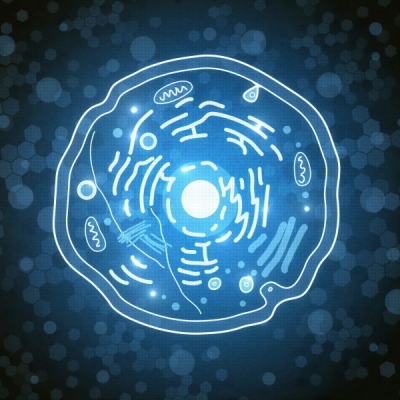 Harvard stem cell scientists have a new tool to see how nimble cells are in response to changes in their environment. Rather than looking at the proteins that cells actively make, the researchers surveyed the proteins that cells choose to destroy. This investigation in cell behavior, by Andre Catic, MD, PhD, in the laboratory of Harvard Stem Cell Institute Co-director David Scadden, MD, is part of a long-term goal to manipulate how cells function and possibly restore activities that are lost in disease.
Harvard stem cell scientists have a new tool to see how nimble cells are in response to changes in their environment. Rather than looking at the proteins that cells actively make, the researchers surveyed the proteins that cells choose to destroy. This investigation in cell behavior, by Andre Catic, MD, PhD, in the laboratory of Harvard Stem Cell Institute Co-director David Scadden, MD, is part of a long-term goal to manipulate how cells function and possibly restore activities that are lost in disease.
One surprising finding was the high turnover of a protein, called NCoR1, which allows a cell’s mitochondria to make energy, in the form of ATP (adenosine triphosphate). The researchers discovered that dynamically changing levels of NCoR1, which in turn affects available ATP, could mean that cells regularly reprioritize their activities, such as shifting from energy production, to say, making biomass in preparation for cell division.
“Just like we have a set of switches in our car that turn on and off particular parts as we need them, the cell has to turn on and off particular parts of its different capacities,” explained Scadden, a hematologist-oncologist who also is co-chair of the Harvard Department of Stem Cell and Regenerative Biology, and director of the Center for Regenerative Medicine at Massachusetts General Hospital.
“Whatever happens in a car to move the wheels forward would be the equivalent to making ATP, but if you want the air conditioner or radio to work, you’ve got to be able to divert some energy toward that, and so we think we’ve discovered that tuning mechanism in cells,” he said.
Catic monitored NCoR1 and other protein destruction by stopping the breakdown process and measuring where proteins accumulated at particular places in the cell. The differences in breakdown between proteins is evidence that cells are constantly monitoring their environment and can switch certain proteins on or off in times of stress, such as nutrient depravation or surgery.
The Scadden Laboratory is primarily interested in blood stem cells, and came to the study of protein degradation to better understand the decisions these cells make to differentiate into the multiple blood cell types. After developing tools to establish general rules about cell decision-making, Catic and Scadden now hope to focus on blood stem cells under different conditions of stress—such as when regenerating bone marrow during a transplant, or when the stem cells become corrupted, like in leukemia.
“Our goal is to figure out how cells are able to change their function so we can learn what switches to turn to direct certain behaviors,” he said. “We don’t just want to work with the cells that we have as they are, but to also get them to be programmable units.”
The work was published in Cell, a publication of Cell Press, and supported by the National Institutes of Health, the National Institute on Aging, the Cancer Research Institute, and the Margaret Dammann Eisner Foundation.
Cited: Genome-wide map of nuclear protein degradation shows NCoR1 turnover as a key to mitochondrial gene regulation. Cell. December 5, 2013
